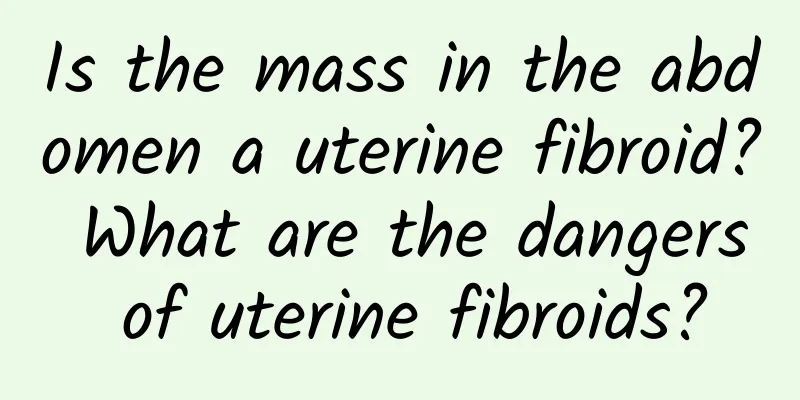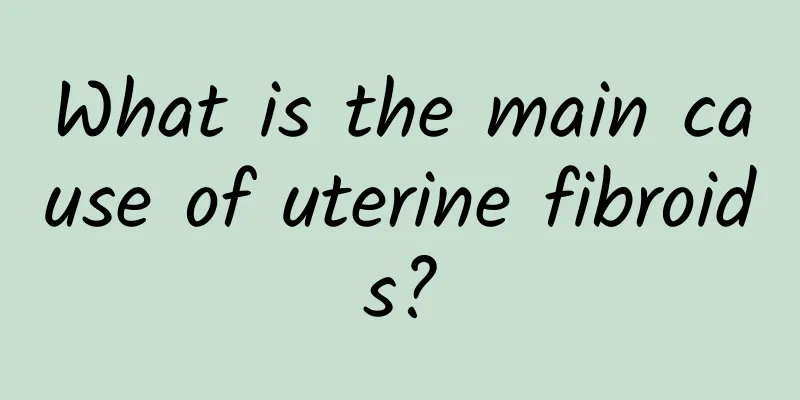Is the mass in the abdomen a uterine fibroid? What are the dangers of uterine fibroids?

|
What are the manifestations of malignant uterine fibroids? Although most uterine fibroids are benign, some patients experience bleeding, pain, pressure, and abdominal masses. These are all symptoms of malignant uterine fibroids and should be promptly noticed and treated. Here is how to distinguish between benign and malignant fibroids: Uterine bleeding is a symptom of malignant uterine fibroids. Basically, most patients will have this symptom, accompanied by female menstruation. Among them, cyclical bleeding accounts for about 2/3; continuous or irregular bleeding accounts for 1/3. Abdominal mass is usually the main symptom of patients with malignant uterine fibroids, and sometimes even the only symptom of fibroids. This often occurs in intramural fibroids that do not affect the growth of the endometrium, especially in the uterine fundus or subserosa with pedicles. Some patients may also experience abdominal pain and an obvious mass in the abdomen. The pain is usually caused by the tumor compressing the pelvic blood vessels, causing blood stasis, or compressing the nerves, or submucosal fibroids can stimulate uterine contractions, causing wide cervical pain inside and outside the uterus; or fibroid necrosis and infection caused by pelvic inflammatory disease, adhesions, and traction. The general location of compression is cervical fibroids, or subuterine fibroids that enlarge and fill the pelvic cavity, compressing the surrounding organs. Compression of the bladder, frequent urination or difficulty urinating, urine retention, etc.; compression of the ureter, leading to hydronephrosis and pyelitis. Fibroids growing on the posterior wall of the uterus can compress the rectum, causing constipation and even difficulty defecation. The above are the symptoms of malignant uterine fibroids. We should avoid them. Perhaps when we are diagnosed with uterine fibroids, we should first clarify whether our uterine fibroids are inflamed. If they are malignant, they should be treated in time to avoid delaying the condition and health. |
<<: Symptoms of postmenopausal uterine fibroids Can uterine fibroids cause uterine bleeding
>>: What are the symptoms of uterine fibroids? What are the symptoms of uterine fibroids?
Recommend
What is adnexitis and how should it be treated?
What is adnexitis and how should it be treated? A...
Being fat is not a blessing ~ The risk of cancer is high, especially these cancers!
Obesity can be said to be a modern disease of civ...
What are the main symptoms of cervical hypertrophy?
Among the diseases of the cervix, cervical hypert...
Learn more about the treatment of cervical hypertrophy
Women should pay attention to the treatment knowl...
Nine measures to care for patients with amenorrhea
Nine measures to care for patients with amenorrhe...
Let’s find out what are the causes of menopausal functional uterine bleeding?
Functional uterine bleeding during menopause may ...
What are the hazards of premature ovarian failure
Premature ovarian failure refers to the phenomeno...
Eat sweets when it’s cold? 1 slice of cheesecake = 300 calories
There are many year-end gatherings, and you can’t...
TCM Syndrome Differentiation and Treatment of Uterine Fibroids
Uterine fibroids, also known as uterine leiomyoma...
How to make a clear diagnosis of late menopause
We must have a clear understanding of the differe...
Actresses Ariel Lin and Janine Chang’s secrets to slimming down their legs! Remove leg fat and create golden ratio of beautiful legs
For girls who love beauty, besides waist and abdo...
Are cervical warts fatal?
In life, I believe everyone has had such an exper...
How to relieve severe dysmenorrhea? Try these 4 tips
Dysmenorrhea is a phenomenon that many people fin...
What medicine should I take for constipation caused by uterine fibroid atrophy? How to solve constipation caused by uterine fibroid?
What medicine should I take for constipation caus...
Can anti-uterine inflammation tablets treat cervical erosion?
Anti-uterine inflammation tablets can be used as ...









